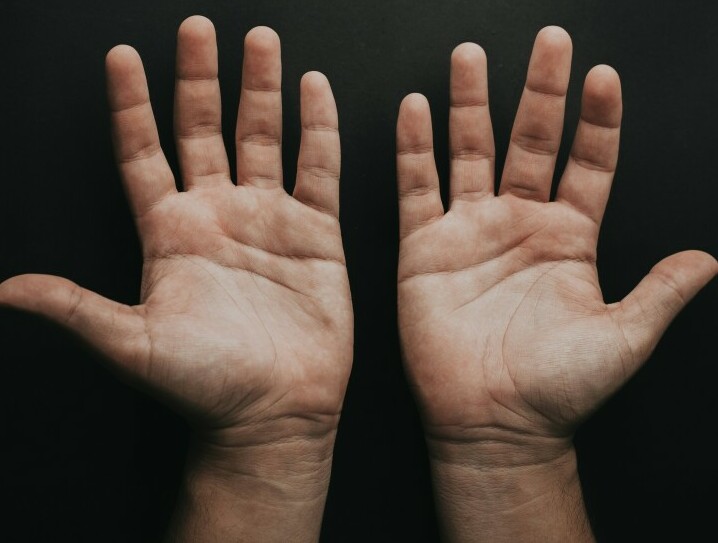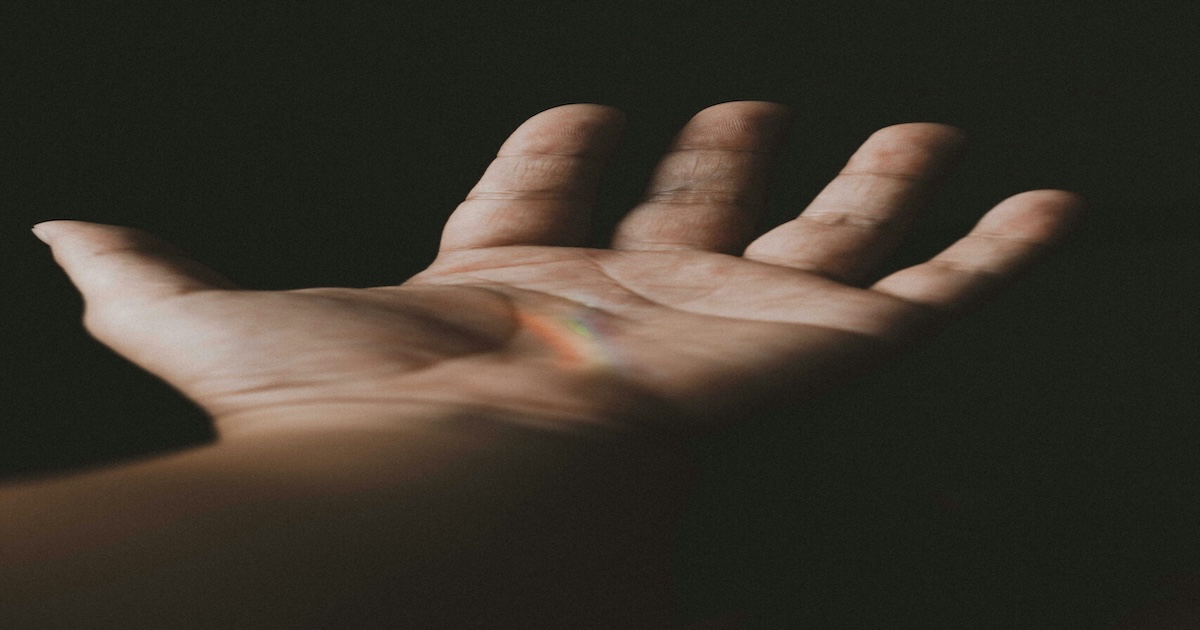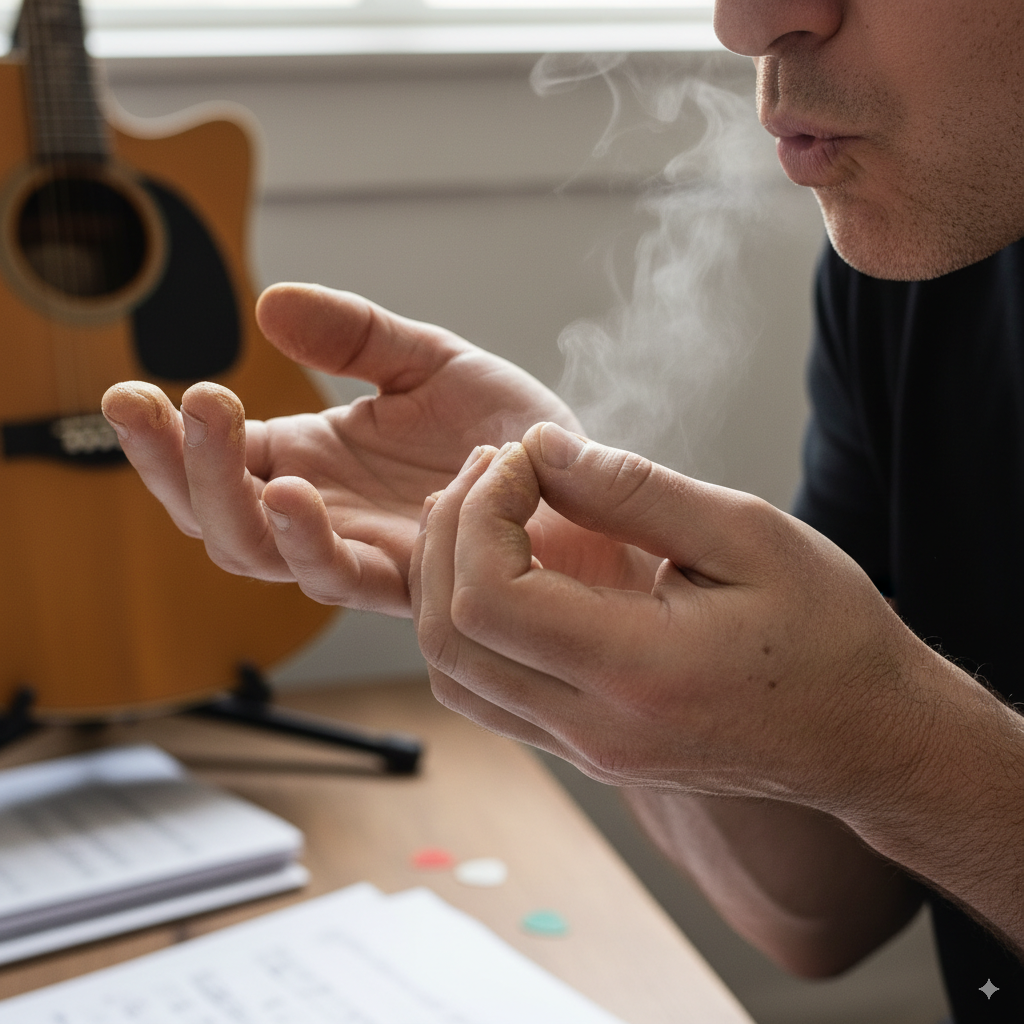
Are you just learning guitar and your fingertips feel like they’ve been through a paper shredder? Don’t worry, we all go through this.
Every guitarist has stared at their red, tender fingers wondering if they’re cut out for this instrument, me included. The good news? That pain is temporary, and it’s actually a sign of progress.
Today, we’ll cover why your fingers hurt, what you can do about it, and how to make your practice sessions less painful and more productive.
By the end, you’ll know how to push through these early hurdles without giving up your dream of rocking your favorite tunes. This isn’t just about building calluses; it’s also about protecting your hands.

Every beginner struggles with sore fingertips. Honestly, it’s a rite of passage for guitar players.
That sharp, burning sensation comes from soft skin pressing against steel strings, something your hands aren’t used to yet. Luckily, with consistent practice, your body adapts.
You’ll develop calluses, which are small, hardened patches of skin that protect your fingertips from pain.
Creating a routine. Start with practicing your basic chords and doing your finger exercises. These foundations are great for your playing and also ideal for gradually building callus strength.
A little soreness is normal as you build resilience on the fretboard, and your fingertips will naturally toughen up over time. Click here on tips for developing good guitar habits.
This transformation is what leads to those sought-after calluses, which, believe it or not, are a good thing in the guitar world. With regular practice, it becomes easier to push down on the strings, making your guitar playing more enjoyable.
I hear complaints all the time saying “playing guitar is too hard” or “my hands aren’t made for playing”. Truth is, anything that you first try is going to be difficult.
Think of it like lifting weights. Your muscles feel sore at first, but as you keep training, they grow stronger. The same thing happens with your fingers.
💡 Pro Gear Tip: Consider starting with a smaller-bodied electric guitar (like a Fender Player Stratocaster). Electrics are easier to play than acoustics because of lighter strings and lower action.
Reflect on WHY you started playing in the first place. Build up those calluses with pride and let those chords ring out nice and clear, for everyone to hear.
I really want your introduction to guitar to be as smooth as possible. So remember, take it slow in the beginning, listen to your body, and you’ll be paving the way for a future filled with beautiful melodies, and yes, strong, resilient fingertips too.
Here’s how to ease the pain while you build finger strength and endurance:

Calluses are essentially your trophy in the guitar-playing arena. If you’ve ever wondered if having tough fingertips is something to be proud of, guess what? It is! It’s one of the many benefits of learning to play.
They form over time as a natural defense against the repeated pressure and friction from the strings, allowing you to play the guitar with less pain and more precision.
It’s a sign that you’re progressing, dedicating time and effort to your craft.
There have been many practice sessions that went on for hours and it kinda felt like an extreme cardio workout! Did you know that you could have such an intense workout and maintain your physical health at the same time while playing your guitar?? Pretty awesome!

Taking proper care of your finger tips means you can enjoy longer sessions with your beloved instrument without discomfort.
Don’t sweat it, just keep your hands clean and slightly moisturized if you need to.
Avoid picking at or cutting your calluses. If you want to keep them in top shape, choose lotions or balms specifically designed for musicians such as Guitar Hands Lotion or Violins Maker’s Lotion Bar.
*Note: Avoid overly softening your fingertips. Those hard earned calluses are there to protect you.
Once your calluses form, guitar finger pain won’t be a constant battle, but there are still pitfalls to avoid:
As you become more comfortable with your practice, you can gradually increase the time you spend playing. You’ll find that, over time, what once seemed like a grueling hour will fly by as you get lost in your music.
It’s important to remember that your calluses, while beneficial, also need recovery time. So, don’t push yourself too hard if you feel any pain or see signs of severe wear.
Embrace this new texture on your fingertips; it’s proof of your ongoing dedication.
I really hope this insight has helped you understand why calluses are a guitarist’s best friend. You’ve learned not just how to build them, but also how to maintain and respect them.
Keep strumming, keep smiling, and remember, in the words of many accomplished musicians, your hands tell your story.
Ready to ditch finger pain and actually enjoy learning guitar?
Check out these beginner-friendly tools I recommend:
| Product | Why I Recommend It | Link |
|---|---|---|
| Ernie Ball Super Slinky Strings (.009) | Perfect for reducing tension and finger pain. | Buy on Amazon |
| FretGuru XT Guitar String Action Gauge | Helps you measure and adjust your guitar’s setup. | View on Amazon |
| Fender Player Stratocaster | Beginner-friendly electric guitar with smooth playability. | See Price |
Most players notice improvement in 2-4 weeks with regular practice. Calluses start forming after about two weeks and continue to strengthen with time.
Mild soreness is normal, but if you feel sharp or lingering pain, take a break. Rest prevents injury and gives calluses time to form.
Yes! Daily, consistent practice is key. Tricks like rubbing alcohol or brief pressure exercises (pressing strings without playing) help.
Yes. Electric guitars have thinner strings and lower tension, making them ideal for beginners struggling with fingertip pain.

I’ve been playing guitar 40 years now; writing, recording, and rocking in bands. Randy Rhoads, Warren DiMartini, and of course, Jimi Hendrix all lit the fire for me, and I’ve been chasing that passion ever since.